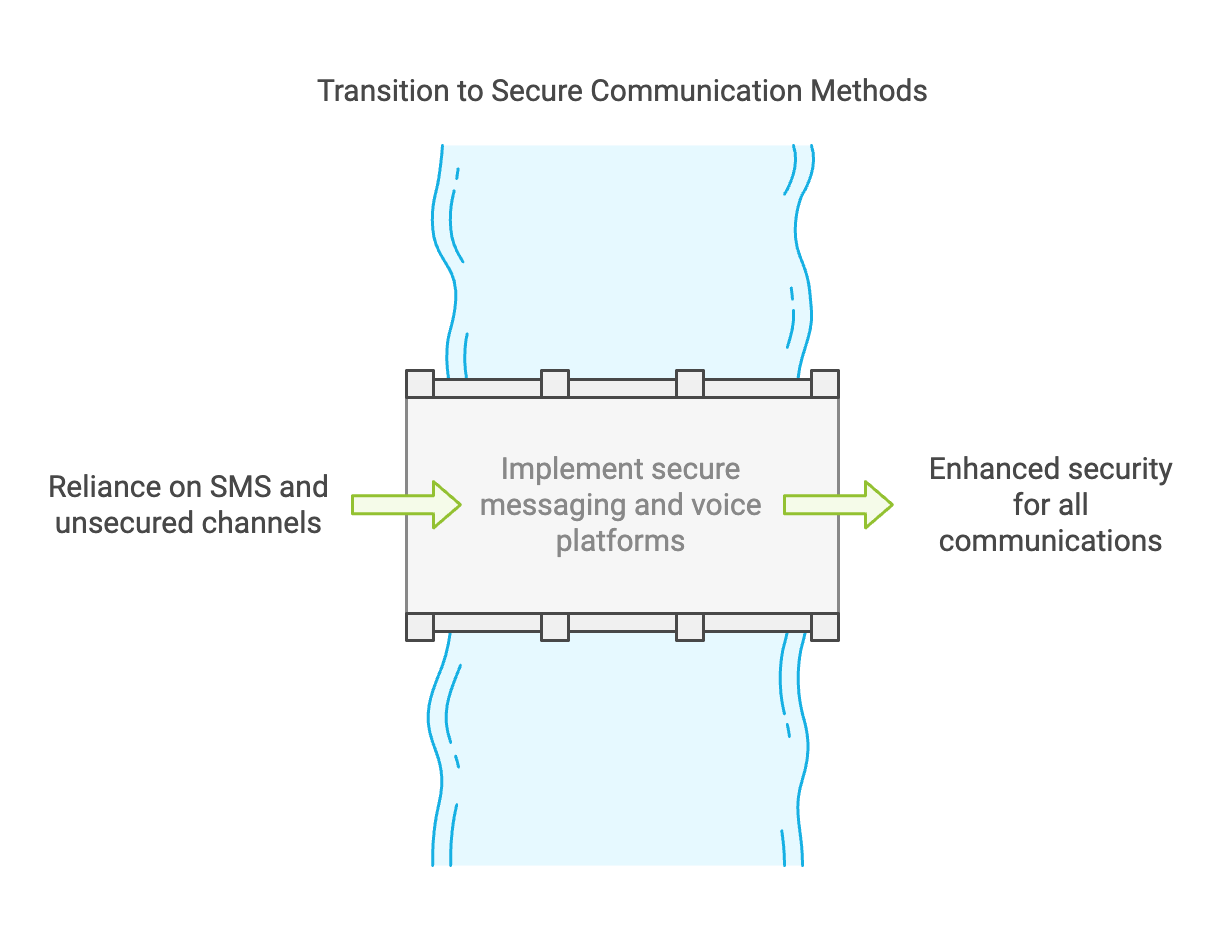Remember those grainy spy movies where agents whispered cryptic messages on burner phones, constantly looking over their shoulders? Well, thanks to the Salt Typhoon cyber campaign, that level of paranoia might not be so far-fetched for businesses anymore. This isn't just about protecting state secrets; it's about safeguarding your company's crown jewels from lurking digital adversaries.
The Wake-Up Call: Salt Typhoon Exposes Telecom Vulnerabilities
The recent revelations about Salt Typhoon, a sophisticated cyber campaign attributed to Chinese state actors, have sent shockwaves through the cybersecurity world. This campaign has targeted telecommunications providers, exposing vulnerabilities that could compromise the confidentiality, integrity, and availability of our communications. The potential for adversaries to access sensitive data, disrupt operations, and gain strategic advantages is a stark reminder that encryption is no longer a luxury – it's a necessity.
CISOs on the Frontline: Tactical Recommendations for a Secure Communications Strategy
1. Messaging: Shifting from SMS to Secure Alternatives
Implement a Secure Messaging Platform: Transition away from SMS text messaging for sensitive internal and external communications. The sources recommend encrypted platforms like Signal, WhatsApp, or Telegram due to their end-to-end encryption, ensuring that only the sender and recipient can access the message content. While iMessage offers encryption within the Apple ecosystem, cross-platform communication requires alternative solutions.
Enforce Secure Messaging Policies: Develop and enforce clear policies outlining the use of approved messaging platforms for business communications. Integrate these policies into security awareness training programs and conduct regular audits to ensure compliance.
Mitigate SIM Swapping Risks: Transition away from SMS-based multifactor authentication (MFA) and implement app-based or hardware-based MFA solutions, such as authenticator apps or YubiKeys, to prevent SIM swapping attacks.
2. Voice Communications: Securing the Spoken Word
Prioritize Secure Voice Calling Solutions: Encourage the use of secure voice calling features for internal communications. For organizations within the Apple ecosystem, FaceTime Audio offers end-to-end encryption, ensuring call confidentiality. Consider implementing VoIP solutions with robust security features and encryption protocols.
Train Employees on Secure Call Handling Practices: Educate employees on identifying sensitive calls and utilizing encrypted communication platforms when discussing confidential information. Emphasize the importance of verifying call recipient identities, particularly for external communications.
Conduct Regular Vulnerability Assessments: Implement regular vulnerability assessments and penetration testing of voice communication systems to identify and address security gaps. This includes reviewing network configurations, access controls, and patching schedules for VoIP infrastructure.
3. Virtual Meetings: Locking Down the Digital Boardroom
Select a Secure Virtual Meeting Platform: Carefully evaluate and select a virtual meeting platform that meets your organization's security requirements, including end-to-end encryption for group meetings. The sources acknowledge that Zoom offers this feature, but it may require specific configurations.
Enforce Secure Meeting Practices: Implement access controls, meeting passwords, waiting rooms, and other security measures to prevent unauthorized access and disruptions. Educate employees on the importance of following these practices and report any suspicious activity.
Conduct Regular Security Audits: Regularly audit meeting recordings and logs to identify potential security breaches or policy violations. Ensure that sensitive information shared during meetings is properly protected and that recordings are stored securely.
4. Email: Protecting the Digital Paper Trail
Consider End-to-End Encrypted Email Solutions: Evaluate and implement end-to-end encrypted email solutions, such as ProtonMail or SMIME, for sensitive communications where data confidentiality is paramount. Be aware that traditional email encryption methods often involve decryption at intermediary points for spam filtering and content analysis, potentially exposing data to vulnerabilities.
Promote Secure Document Sharing Practices: Train employees on secure document sharing practices, encouraging the use of secure file sharing platforms like SharePoint or Box instead of email attachments. These platforms offer granular access controls and encryption at rest, mitigating the risks associated with storing and sharing sensitive documents via email.
Implement Data Loss Prevention Measures: Utilize data loss prevention (DLP) tools to prevent the accidental or intentional transmission of sensitive information via email. Configure DLP rules to detect and block emails containing sensitive data, such as personally identifiable information (PII) or financial data.
5. Embracing a Secure by Design Mindset
Prioritize Secure by Design Principles: Integrate security into the design and development of all communications systems and applications. This involves selecting secure coding practices, conducting thorough security testing, and prioritizing secure default settings.
Conduct Vendor Due Diligence: Thoroughly vet all vendors involved in your communications infrastructure, including telecommunications providers, software vendors, and cloud service providers. Assess their security posture, incident response capabilities, and data protection practices.
Balance Security with Usability: Implement security solutions that are user-friendly and intuitive to avoid workarounds and shadow IT practices. Provide comprehensive security awareness training to empower employees to make informed decisions about secure communications.
The Bottom Line: A Proactive Approach to Encryption is Essential
The Salt Typhoon campaign has highlighted the need for a paradigm shift in how we approach communications security. CISOs and security leaders must adopt a proactive and comprehensive strategy that prioritizes encryption, secure by design principles, and ongoing security awareness training. By implementing these tactical recommendations, organizations can mitigate the risks posed by increasingly sophisticated cyber threats and safeguard their most valuable assets.




